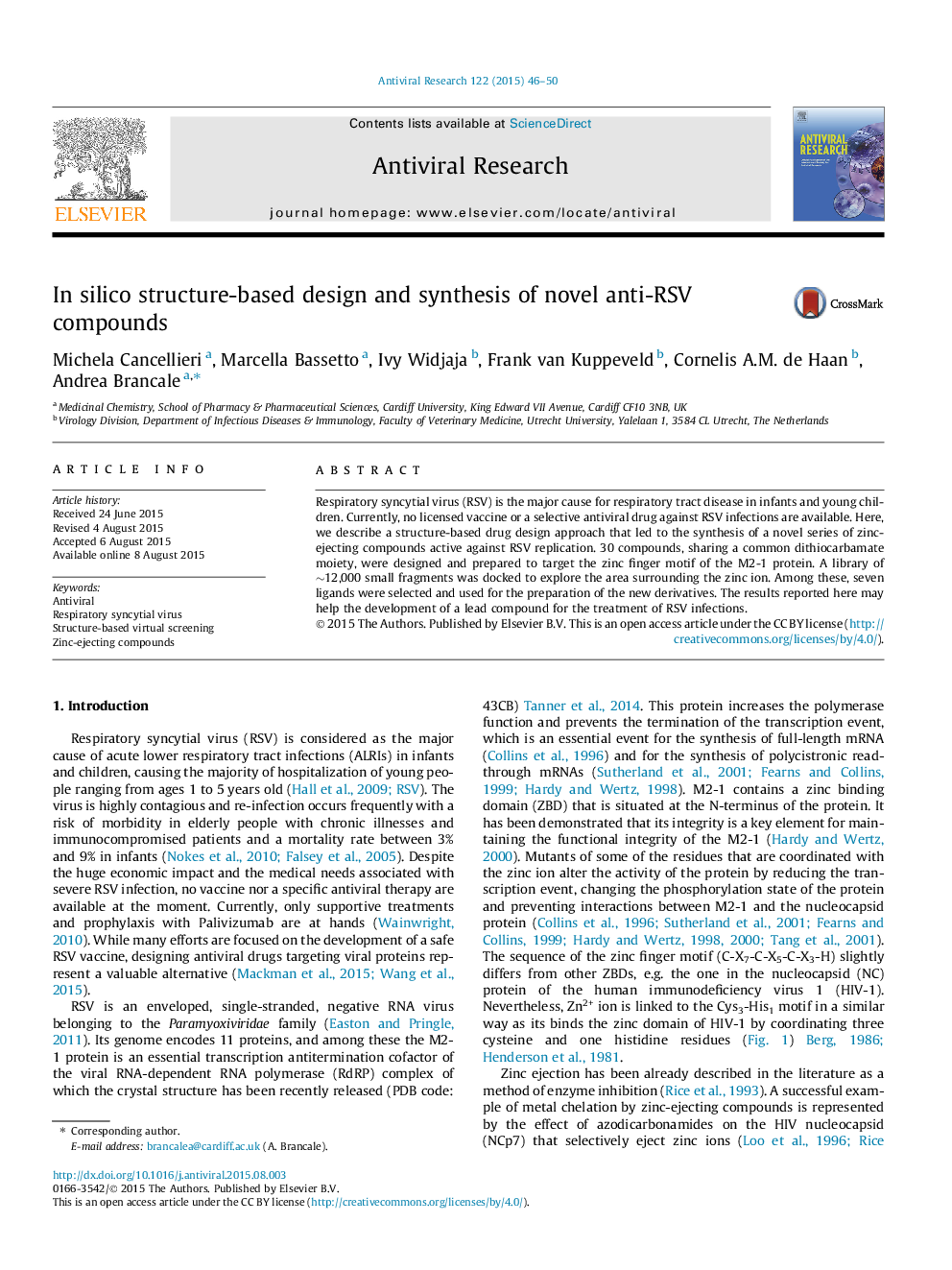| Article ID | Journal | Published Year | Pages | File Type |
|---|---|---|---|---|
| 5821826 | Antiviral Research | 2015 | 5 Pages |
â¢A computer-aided approach using a library of small fragments guided the design of compounds against RSV replication.â¢The scaffold is characterized by a series of fragments selected by docking studies and a central dithiocarbamate moiety.â¢Several molecules were identified with low μM IC50 in a cell-based assay.
Respiratory syncytial virus (RSV) is the major cause for respiratory tract disease in infants and young children. Currently, no licensed vaccine or a selective antiviral drug against RSV infections are available. Here, we describe a structure-based drug design approach that led to the synthesis of a novel series of zinc-ejecting compounds active against RSV replication. 30 compounds, sharing a common dithiocarbamate moiety, were designed and prepared to target the zinc finger motif of the M2-1 protein. A library of â¼12,000 small fragments was docked to explore the area surrounding the zinc ion. Among these, seven ligands were selected and used for the preparation of the new derivatives. The results reported here may help the development of a lead compound for the treatment of RSV infections.
